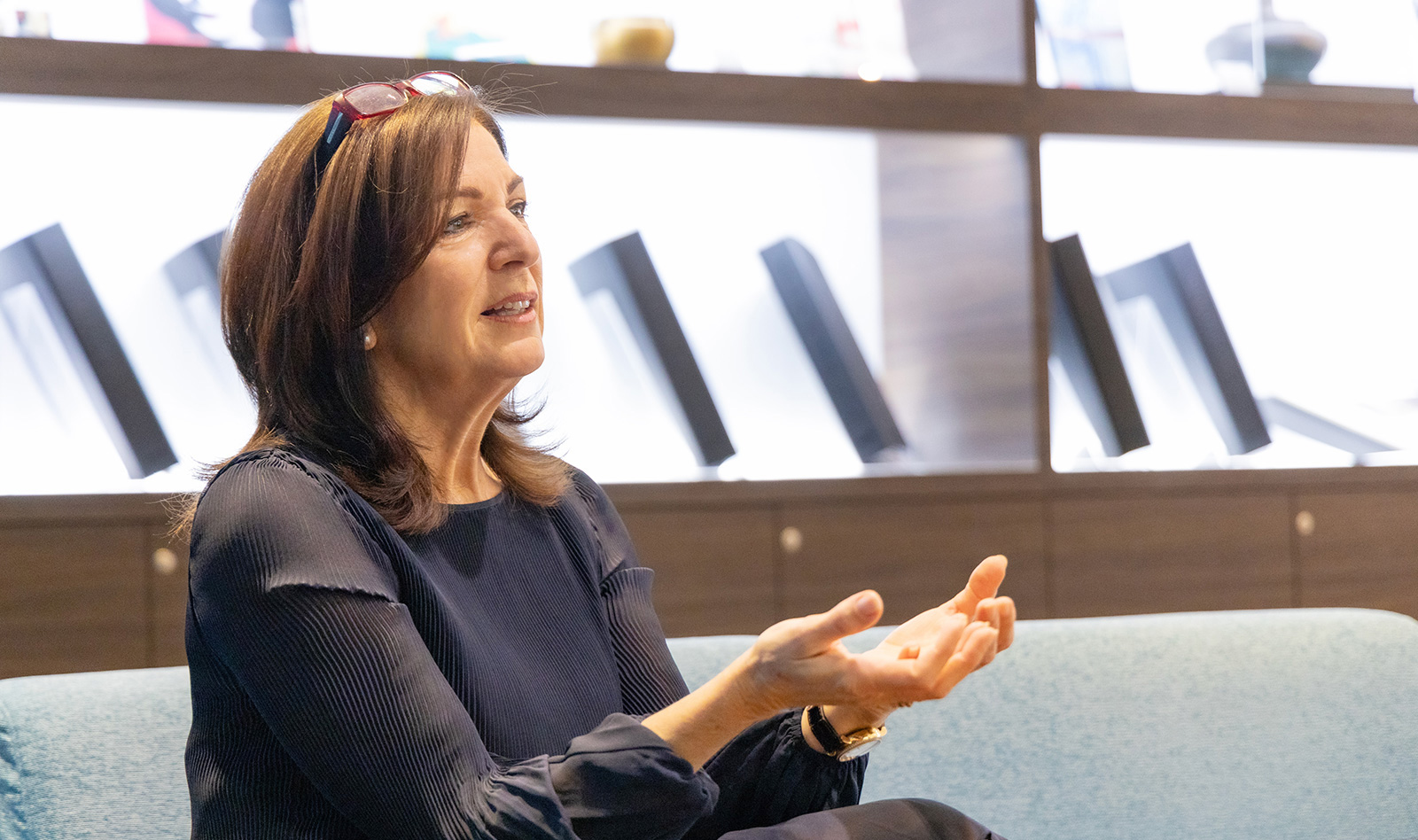

Emerald Technology Ventures Managing Partner and CEO Gina Domanig
Founded in 2000, Emerald Technology Ventures is a global investment firm in energy, water, advanced materials, and industrial IT, managing one of the largest clean technology venture portfolios in Europe and North America.
It manages and advises over USD 1 billion in assets from its offices in Zurich, Switzerland, Toronto, Canada, and Singapore. Emerald shares insights on more than 1500 startups a year with DIC. In turn, DIC shares this information internally, generating discussions on joint research ideas.
In 2000, Managing Partner and CEO Gina Domanig founded Emerald Technology Ventures as the first independent cleantech venture capital fund in Europe. Gina has earned MBA degrees from Thunderbird in Arizona and ESADE in Barcelona, is fluent in English, German, and Spanish, and has over 30 years of international business experience including banking, M&A, strategic development, and venture capital.
Prior to launching Emerald Technology Ventures, Gina served as senior vice president at Sulzer, a Swiss multinational, responsible for strategic planning and M&A. In addition to her duties at Emerald, Gina also serves on the boards of GeoDigital International Inc. and Urgently Inc., the advisory board of the Danish Innovation Fund, and the advisory committee of the PRIME Impact Fund among others.
In January 2017, DIC Corporate Venture Capital (CVC) began doing business with Emerald with an initial investment in the Emerald Industrial Innovation Investment Fund. Gina Domanig sat down to talk with DIC Corporate Communications on her recent visit to Japan.
Craig: Hello and welcome to Tokyo! What brings you to Japan this time?
Gina: When we started Emerald 22 years ago, we realized that while it was really easy to launch venture investments in North America, it was more difficult to do so in Europe. That’s because the VCs simply didn't know each other. So, 22 years ago we started holding an event in which we’d bring together everybody in the ecosystem—all the corporates interested in innovation in Europe and the VC's as well.
As more and more Japanese corporates began attending this event, they came up with the idea of holding a mini event—just like the one in Zurich—in Tokyo. As the event in Zurich averages around 140 people, we originally expected 30 – 40 people in Tokyo. Well, it's happening tomorrow and 80 people have signed up.
The main topic is centered around how corporates collaborate with startups. And as everything we do is centered around clean tech sustainability, that's obviously implied, but you really see that a lot of corporates are interested in learning from each other about the journey so far in open innovation and corporate venturing. So that's why I'm here in Tokyo. That and visiting the Japanese corporations invested in our fund.
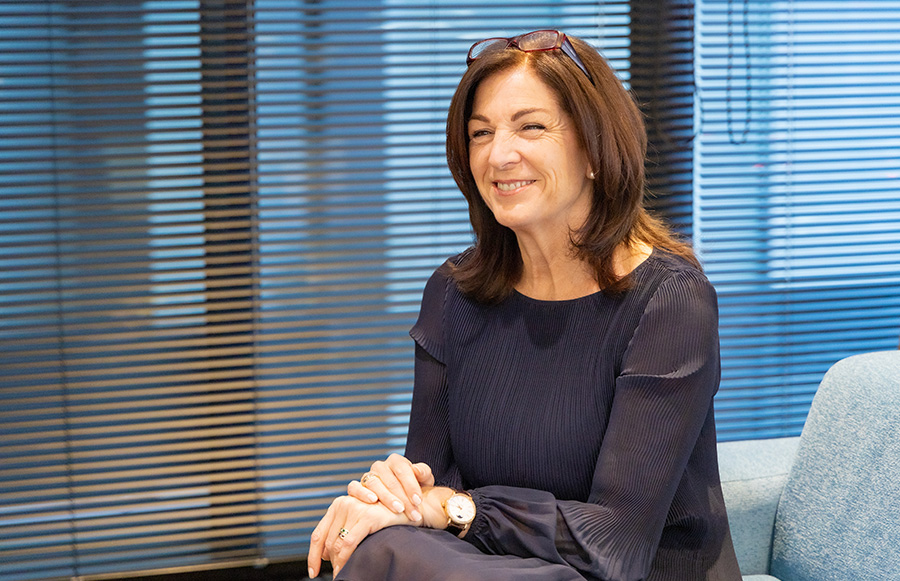
Craig: So, Emerald is holding this new mini event here in Tokyo. Is this your first mini event?
Gina: Exactly. Yes, it is. It's super exciting. It began as a small event that I would do between meetings, and now it's a full-day event with quite a large crowd. We didn't publicize it. We wanted to mainly do it for our investors—for the nine investors here, and maybe a couple of others who are interested. But our investors kept telling other people until last week, when I was in Palm Springs and somebody said, ‘I hear you're having an event next week in Tokyo.’ For us, it's a great opportunity to bring people together, and our investors have been really gracious in agreeing to speak at the event as well.
Craig: In reading up on Emerald, I see your investment areas originally included water, energy, materials, agriculture, and packaging. Do you have a top priority at the moment?
Gina: We have always invested across all of the clean tech industrial sectors. Over time, one obviously shifts focus within that scope. Right now, there's continued high interest in all energy topics and sustainable packaging. The number of potential customers in sustainable packaging solutions is also quite high—which wasn't the case over the past 20 years, but that has definitely changed—as well as opportunities in and around automation and digitalization—which continues to be of high interest to all of our industrial corporations, very often to improve their own operational efficiencies and therefore their (carbon) footprint in the end.
And we now have our own sustainable packaging fund that we launched just over a year ago. We're still in the fundraising stage, but we already have some really good participation across the value chain. The interesting thing about sustainable packaging is that you need buy-in across the value chain and innovation to really see the light of day.
So, we have people all the way upstream, then we have converters, and fast-moving consumer goods people all the way down through to waste management: The people who, at the end of the day, everybody is counting on to actually do something with the waste other than landfill. It’s really exciting to take on this challenge in such a difficult sector.
When we launched our sustainable packaging fund, my LinkedIn post said, “When has Emerald ever been about easy?” We started in clean tech 22 years ago, a first-time fund, in a sector that didn’t exist, so starting our own sustainable packaging fund is truly exciting.
Craig: So, it takes a lot of participants to make a sustainable packaging fund circular, right?
Gina: Oh yeah, and also, it's not just about investing in a fund. It's participating in pilots, and collaborating, because a startup is not going to be able to commercialize a technology in sustainable packaging without the participation of many players along the value chain.
Starting the fund may seem like a difficult thing, but it's probably the easier part. Finding the startups is one thing, but it's helping the participants, the startups, as well as the corporations to form collaborations to pilot these solutions and see what can actually be commercialized at the end of the day. I think that'll be really challenging, but it'll be super exciting.
Craig: I understand that DIC is one of the few materials companies invested in the fund. How rare are material venture firms?
Gina: It's increasing. When DIC made the initial investment in 2017, it was less common. But as certain sectors come under threat, it presents more opportunities. When companies see others doing something right—whether it's in their geography or their sector, that kind of forces them to think about their innovation approach, and they begin to organize themselves better for open innovation. It is becoming more prevalent, but DIC was definitely one of the early movers.
Craig: You launched Emerald 22 years ago, but when did you yourself first became environmentally conscious?
Gina: It was prior to that. I was working at a large Swiss Industrial corporation which had a lot of initiatives to build businesses around the sustainability theme. I was introduced to the topic there. I was head of strategy in M&A, so when I left that company, I joined Sustainable Asset Management—the creator of the Dow Jones Sustainability Index.
There my mandate was to start a sustainability focused venture capital fund. I believed in sustainability, and so I moved all of my chips to that number—so to speak. And it’s happened. Dedicating ourselves to sustainability was difficult in the beginning because, even though we were passionate about sustainability, many people just weren't convinced that sustainability trends were inevitable—or that sustainability would propose dramatic challenges to many of the large incumbents, but also opportunities.
Craig: Obviously, things are picking up for you. You're hiring more people. How would you evaluate the potential impact of clean tech investment over, say like the next 10 years?
Gina: It's going to be dramatic. There will be a lot of small changes that add up to big changes. We must not underestimate the cumulative effect of small changes. If you think about energy efficiency technologies in a processing plant, you’re subtracting 5% here and 3% there, and that adds up to a major impact in the end. People shouldn't be out there only looking for the one giant breakthrough that's going to completely replace an industry. It's also about smaller changes.
If you think about the water industry, wastewater, it's the accumulation of many small innovations and initiatives that will lead to a sustainable change at the end of the day. I think there's also going to be dramatic changes. We've already seen some pretty dramatic changes in technology. If you think about electric vehicles and the charging infrastructure, who would have thought we’d be where we are today?
I think there will be a lot of change. I’m looking forward to seeing the electrification of other large transport. We're not there yet, but think about marine transport, think about aircraft, there really aren't any economically viable solutions there yet.
Craig: The 2022 UN Environment Programme (UNEP) report says investments in ecosystems must reach $384 billion a year by 2025—more than double current levels—to combat climate change and protect natural resources. Do you see that kind of potential?
Gina: Yeah. The venture capital industry is just one of many contributing factors. Attracting $385 billion in investment funds means that the entire volume of venture capital, cleantech venture capital per year, has to happen every two days. So, it's not going to be venture capital alone. A lot of the investment is going to be in infrastructure. We're just the beginning of the chain.
First, technologies need to be developed, scaled, and then the rollout financed. And those are the bigger dollars. For example, the amount of money the venture capital industry invested in solar technology is nothing compared to what that industry now spends every year investing in solar plants. Think about how much is spent every year in financing solar plants or wind farms, and it will be the same for a lot of the other fuels.
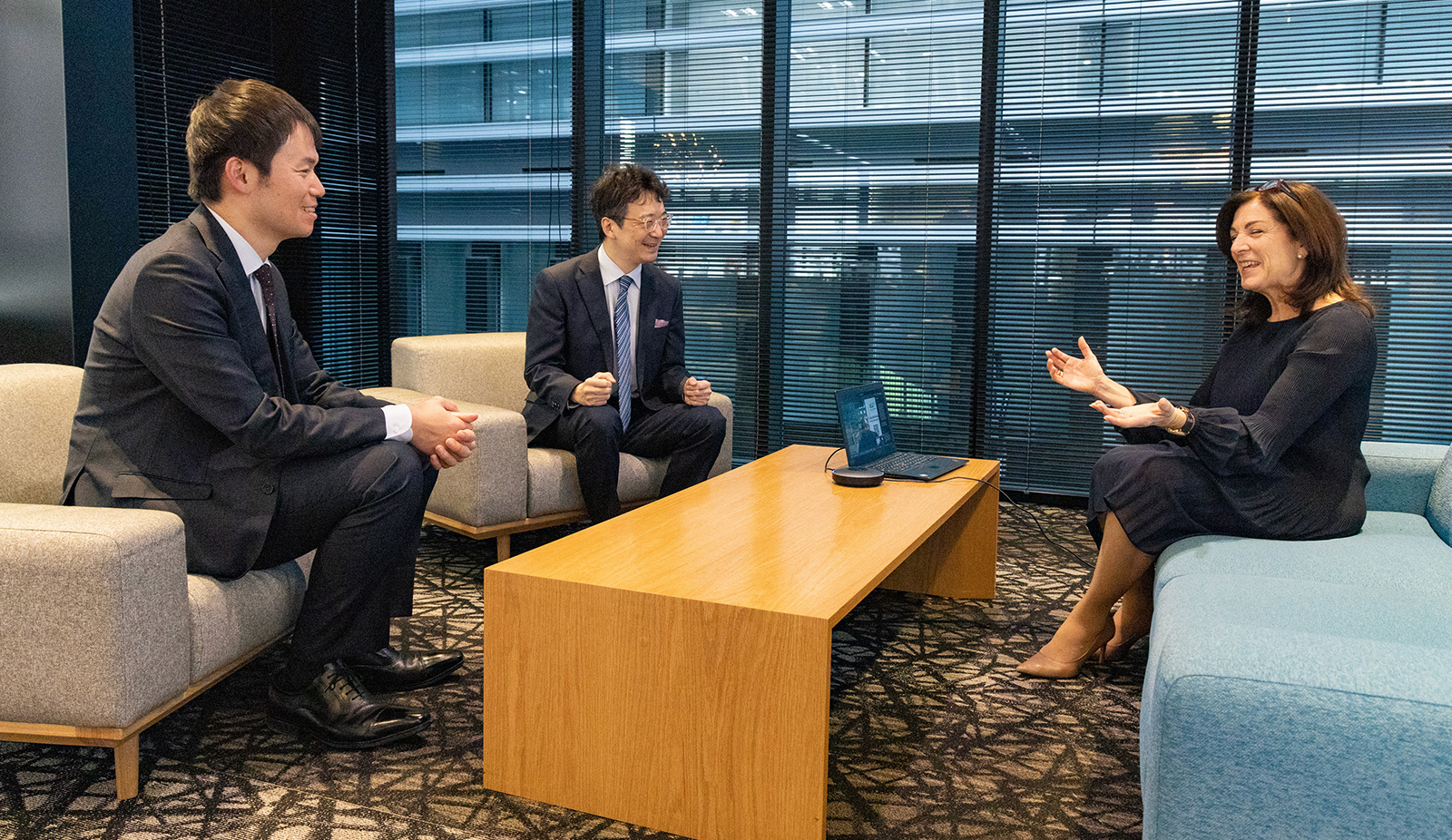
Craig: So, do you see your role as the proof of concept in the ecosystem—like photo plankton in the food chain—or somewhere else?
Gina: We're definitely at the forefront. We are part of the triaging, figuring out where the big money is going to be spent in the end. You have to kiss a lot of frogs. So, there's going to be things that we invest in that don't work out in venture capital. That's fine. That's our role.
But for the ones that do work out, we need to be able to scale those companies. For the industries that we’re focused on, it's almost impossible for some of these startups to even get access to the market unless they're working with the large incumbents. So those corporations need to buy in, and they are.
You now see corporations stepping up, understanding their role as part of the solution. Hopefully we’ll find those interesting companies to triage, finance to scale the corporations, collaborate, and then a lot of them will actually end up being part of a large corporation. In the end, a few will go public, but most of them in our sectors will actually be integrated into a large incumbent that has the sales and distribution network and resources to actually create the most impact with those innovations.
Craig: Do you have a proprietary index for measuring a company’s potential environmental impact?
Gina: On the venture capital side, we don’t have a proprietary index for measuring a company’s potential environmental impact. However, while Emerald mostly manages venture capital, we do also manage a debt guarantee program for the Swiss Government—which is 350 million Swiss francs, about the same as the dollar-euro now. As that program is very much focused on CO2 reduction, we have quite an elaborate methodology for measuring the CO2 impact of companies that we’re supporting with these debt guarantees.
On the venture capital side, however, we’re not just targeting CO2. We’re targeting a lot of other areas as well. So, while we could bring over the same CO2 methodology that we've been using for the past eight years to the venture capital side, it would only measure CO2, and we don't want to under value the other things. That’s on the impact side.
On the ESG side, unfortunately there are no ESG standards in venture capital. Here, I should also mention that we distinguish very much between the impact of what we do, and the impact enabled by the companies in which we invest, and ESG is how we do that: How should startups be properly governed? How much social responsibility should startups take on? Obviously, these factors also depend heavily on the size of the company—a one-person startup versus a 300-person startup. We're trying to promote ESG because we've been in this industry for so long and we're the first ones in Europe.
We do have a certain platform that we could use to promote the creation of ESG standards. At our most recent event in Zurich, we had one session focused on creating ESG standards in venture capital. And we created a working group with a lot of our peers to share our approach, because we do need to improve ESG standards in venture capital to achieve a common understanding with the other funds in which we co-invest. We can't have a completely different interpretation of ESG when we determine how our portfolio companies should be operating compared to the person sitting next to us on the same board.
Craig: I see a great need for a standardized index for measuring environmental impacts, so I wondered if you might have one.
Gina: Yeah, we're working on it. I think the next one that my team will come up with is a measurement for water impact. But again, that'll be water use. It's more difficult if you're talking about toxic waste or wastewater.
Craig: In meeting global climate goals, which do you think is more vital: energy efficiency or decarbonization?
Gina: We need both. To grab people’s attention, you come up with new materials. Something like a new sustainable aviation fuel sounds really impressive. It's really exciting but achieving greater energy efficiency in buildings will have a greater impact. If you improve insulation, window technology, and HVAC systems, you can make a big difference as the built environment generates 40% of annual global CO2 emissions.
Craig: I was thinking of examples like decarbonization—concrete that sucks carbon out of the atmosphere, energy efficiency—a couple of companies working on more energy efficient windows, energy production and conversion.
Gina: There's actually a Swiss company which everybody's super excited about. They have cool technology, but it's far from being economically viable. Some very large corporations are financing the hard to abate sectors like cement. They need to take a long-term view in supporting technologies that can help capture carbon, but it's not a venture play.
Craig: Would you say your focus is still on clean tech investing, or have you shifted to more standard ESG investing?
Gina: I would say that we're still focused on clean tech, and they tend to implement ESG—that’s how Emerald and our portfolio companies operate. The importance of ESG will increase within our investment activities, however, we're still focusing on climate tech in as far as making an impact on the environment.
Craig: So ESG is a kind of measuring tool?
Gina: ESG is kind of a risk management tool. We just happen to be focusing on the environmental—the E in ESG—and the two things end up overlapping.
Craig: In terms of ESG standardization, how do you determine what to consider environmental? Do you have a clear method? As we talked about, there's no current standard of what's environmental, so how do you do it?
Gina: Well, we look at so many different technologies, I think with each one we look at the market opportunity: What's the value proposition? What's the market opportunity? And if their value proposition is environmental improvement, but the market is very, very small, then they're not going to end up having very much of an impact. It also won't be a very interesting investment for us.
So, we're really looking at companies that are moving the needle in a large enough market. It doesn't mean no one should be financing the other companies, but to generate venture capital returns, we need to go after the things that are going to have a much bigger impact.
We have a team of 50 people, most of whom have a technical background or specialize in different sectors. They do really detailed analysis to determine what impact this particular technology will have and if it's energy efficiency, we say, OK, what's the likelihood that it's going to get adopted? How quickly can we get it adopted? How big is the total market? Then we drive our analysis off that analysis.
Craig: Have you heard Malcolm Gladwell talk about his weak link theory? Gladwell uses the metaphor of comparing soccer to basketball: A basketball team can become a championship team by adding one impact player, but a soccer team actually improves more by improving the weakest player on the team. Gladwell says, looking at recent history, you really get more from investing in the weakest links than strengthening already strong ones. For example, Bill Gates is focused on curing diseases like malaria, investing more money into small things.
Gina: That's interesting. So, I guess the question there is, are you better off addressing the sectors which are the biggest polluters than say marginal improvements in those that are already high performers? You know, that's probably right, but only if big polluters can be motivated to change.
Well-established businesses have regular income, comfortable hierarchies, and secure value chains. Then, often, new technologies will not just disrupt their business but completely reshuffle the value chain, like in packaging. It could mean the guy who was once your customer becomes your competitor. You might need to merge with your supplier. All these relationships get thrown up in the air like balls only to come back down in a completely different structure. Yeah, that's interesting.
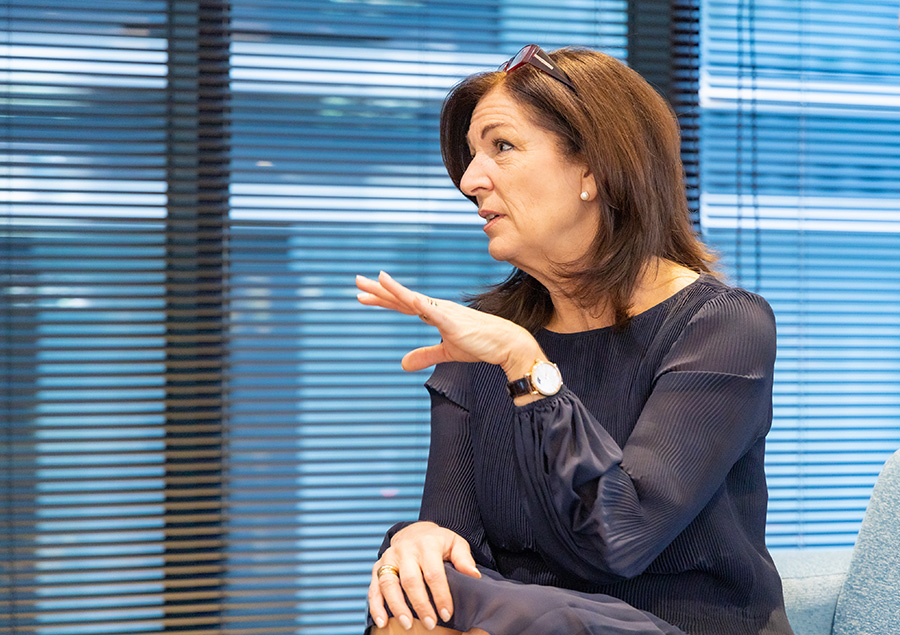
Craig: In thinking about weak links and strong links, much investment is focused on the developed world rather than the developing world, even though greater impact might be made in the developing world. What are your expectations for Asia? Japan is quite developed compared to the rest of Asia, where there's lots of potential growth.
Gina: Potential. Exactly. We look at various aspects. One aspect is which regions have corporates that want to collaborate with startups. Another aspect is which regions have startups, what types of innovation they have to offer—technology or business model innovation—and where that innovation may be deployed. In Africa, for example, we see a lot of really innovative business model innovation that's tailored for their market structures, for their economics; it’s existing technology business model innovation for their local market, which can be transplanted into other similar markets. However, Emerald really looks for technology innovation.
Obviously, there are pockets in Asia, like Japan, where there is a history, a culture of technology, research and development, and innovation. Japan has a very strong base upon which it can grow its venture capital industry. So perhaps with more entrepreneurial activity Japan can translate that innovation into startups—like Germany 15 – 20 years ago.
So as far as looking for deals, for 22 years we've had operations in North America and Europe. At the beginning of the pandemic, we opened an office in Singapore. We opened an office in Asia to source deals in the region, and there's a lot of entrepreneurial activity, a lot of research and development in Singapore.
As far as deploying technologies, the entire region of Asia is great, if the startups can get corporates to help them. Very often, if we are invested in or looking at a company in the US, they won't even have Asia on their map because it's just so far away. It's so difficult for them to break into the region. The probability of success is much higher within the typical 5 – 6-year time horizon that startups usually are focusing on now.
Each region faces different issues. The packaging issue in Asia is more about disposal—the lack of a proper waste collection industry. Also, we see producers using packaging products that are much more difficult to collect, compared to say, the challenges of plastic waste in Europe. For example, in Switzerland, there are three different bins to collect different types of plastic waste; the Swiss collect every kind of plastic, even thin films, so there it's more about the technologies used to recycle plastics, not issues around waste collection.
We see a lot of beautiful packaging in Japan. However, in Japan, the issue is the amount of plastic waste. Consumers in Europe get angry if products come with too much plastic packaging. Even at department stores, it's not uncommon in Switzerland to see consumers unpacking items at the counter and leaving all the packaging behind, putting items in their purse or their bag, because consumers don’t want the burden of disposing of all that plastic packaging.
Grocery stores in Europe are changing a lot. They are converting to bulk sales and allowing consumers to bring their own containers to buy unpackaged vegetables. Many of these changes are directly related to waste management systems in Switzerland, where disposing of anything that can't be recycled becomes extremely costly.
However, it's not just the economics. After plastic bags were banned at grocery stores, there was public shame in being seen leaving a grocery store carrying a plastic bag. People would rather carry groceries in their arms—not because they don't want to pay for the plastic bag, but because they don't want to be seen carrying a plastic bag. It’s cultural.
Craig: Thinking about Japan, many companies have left Japan to concentrate on developing markets instead. And a lot of companies have given up on Japan because of the demographics. Do you see bright spots for investing in Japan despite the demographics and slow growth?
Gina: I distinguish between where's the startup, where's the market, and where’s the corporate that wants to engage with startups. We’ve seen phenomenal growth in the number of industrial corporations in Japan that are announcing sustainability goals, have open innovation programs in place, and are engaging with startups. These companies have increased dramatically in the last 10 years. As Japan is a very small market, startups rarely focus on Japan as a market. Startups focus on Japan for the potential partners here. On the innovation side, Japan’s VC or startup ecosystem is still in its infancy. But I think it has a lot of potential.
Among the competitive advantages of nations, there are several key ingredients: Economic stability, governance, valuing education and innovation. Japan has many of these key ingredients. However, without entrepreneurial activity you won't have the startups. You'll have the research and the innovation, but with that innovation being absorbed very early, without getting the same committed market launch they would get if they were an independent company.
Craig: I think there's a lot of creativity, a lot of entrepreneurial spirit here. Unfortunately, it often gets crushed by a kind of age-based hierarchy. Here, a lot of people won't listen to young people with good ideas. And the fear of failure is quite great here. Every mistake you make lowers your value and you might never get it back.
Gina: I’m reminded of Start-up Nation: The Story of Israel's Economic Miracle, and how people who have nothing are more apt to say, ‘Why not take a chance? You're not risking anything.’ Kahneman and Tversky discovered how people value losses and gains differently, and how they make decisions based on those perceived gains versus perceived losses. For example, most people prefer winning $50 with certainty rather than taking the risk to toss a coin and either win $100 or nothing. In Switzerland, where both the standard of living and the consequences of failure are very high, if corporations really want to embrace open innovation and work with startups, they need to understand that failure is part and parcel. You will not have success unless you embrace failure as well.
In venture capital, as you can imagine, sometimes the things we invest in don't work out. So, we don't just celebrate successes, we celebrate failures as well. Because without the failures you wouldn't have the successes. If people feel so crushed by a failure that they're paralyzed, there will be no progress.
We need people with this mindset at the highest levels of the organization. They need to actually celebrate failure. They should be encouraged to take calculated risks, knowing very well that if a technology isn't fully proven they can't know if the economics will work at scale. That's how we approach our activities: Understanding the risks and understanding how to mitigate those risks by adjusting the investment.
If we think there's a lot of technology risk, our investment will be very small. If we think most of the technology risk is out and the commercialization risk is manageable, then we'll make a larger investment. Either way, the consequences of failure cannot be so bad that your fear of failure parallelizes the organization.
Craig: I've been in Japan 30 years, worked for several companies, and DIC is the first company telling me it's OK to fail.
Gina: Really. We like to hear that. It's difficult to empower people who feel they need to cover themselves or a boss to shield them. I think it is cultural, but for us, clearly early adopters have a different corporate culture. I think that celebrating failures, calculated failures, does a lot to encourage people to innovate—it sends the message that experimentation is allowed and encouraged.
Craig: We are of the same mind in this area. One of my goals is to find ways to celebrate failure on a global scale in the DIC Group. We started a global blog to talk about experiences, and I want to include failures in these experiences.
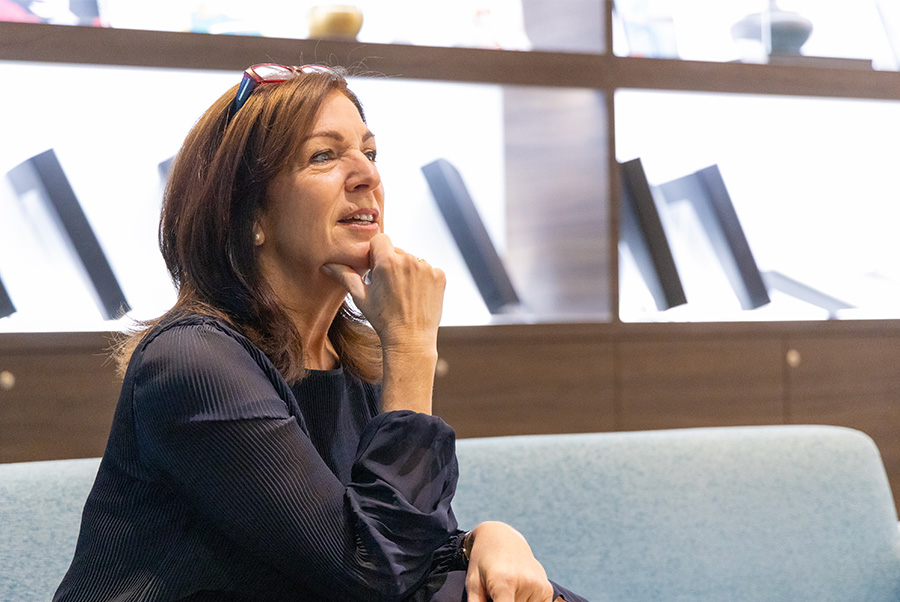
Gina: Yeah, exactly. I feel most proud when younger people in the team say they feel that there aren't serious consequences for making a mistake. Most venture capital firms allocate deals to specific people. It's called deal attribution and they calculate the IRR of deals attributed to that person. I absolutely refuse to do something like that in our team.
We will not attribute successes or failures. We win as a team. Years ago, one financial investor insisted upon having a deal attribution, so I said OK, list all of the companies that lost money and put my name next to them. Ultimately, I'm responsible, so that's fine with me. We need to get away from this view that if two people take a risk, one can end up with a success while the other has a failure, and suddenly they are on different career paths. That can't be right.
I think that on the venture side, there will be many, many examples of successes and failures that you can use as content to get people comfortable with the fact that not everything succeeds, and to show that in fact, some of the most important learnings come from the failures.

